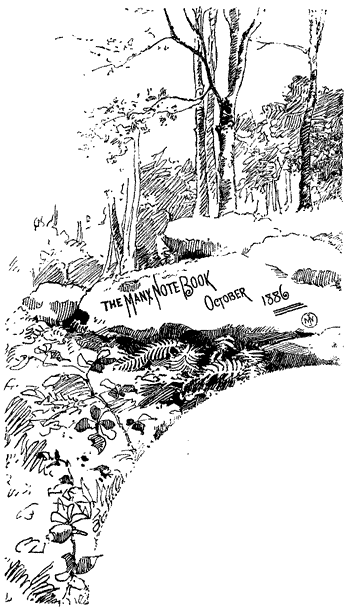
[From ManxNoteBook vol ii,1886]

Thirteen years ago in making the railway near Port St. Mary, the ballast was supplied from a field on Ballaqueeney by removing a certain portion of the gravel that lay close to the surface. It was soon found that it was the site of an old burial ground, and among the stones which formed the graves were two with Ogam inscriptions, which Mr. Kelly, the owner of the land, at once wisely rescued and preserved. The smaller stone, of a rough slatey nature, is unfortunately broken into many fragments, through the action of the weather, but it can be pieced together sufficiently to make almost all the inscription legible. It is nearly certain that it was originally larger, and that a portion of the legend is lost. But whether it was broken when disturbed by the navvies, or before it formed part of the grave, it is hard to say. It now measures 1 ft. 8½ in. long, and is 5 inches square. Professor Rhys, of Oxford, reads it thus :-
The vowel after c in the first word cannot now be determined, but it was probably u ; and the digits forming the c are somewhat obscure; but the remainder of the legend is perfectly clear. There is a peculiarity about this inscription that it reads up the right hand side of the stone, and round the top towards the left; whereas the opposite direction is the usual method.
The larger stone is of lower Silurian sandstone, and measures 3 ft. 8 in. long, by 1 ft. 2½ in. broad, and 4½ in thick ; and here again is a peculiarity, for in the middle of the inscription, in fact, in the middle of a word -ma-qi-is a hiatus of over a foot long, occasioned by a patch of quartz on the edge of the stone, which was quietly, passed over by the stonecutter. Professor Rhys was greatly puzzled with a copy of this inscription that was sent to him, taking it to consist of two fragments, and not until he examined the stone itself this summer, during a visit to the Island, made with that object, was he able to decipher it. He knows of no other similar instance among Ogam inscriptions. He reads it :-
The rest of the inscription on the top of the stone is so mutilated as to be quite undecipherable.
These stones are certainly monumental ; the first name on each being the genitive form of a proper name, denoting to whom the stone was raised, with Maqi, meanincy son, the ancient form of the modern Mac, followed by the name of the father. They belong to the VIth or VIIth century, and are found chiefly in South Wales and the South of Ireland, one in North Wales, and a few in the North of Ireland, and now these in the Isle of Mann are added to the list; where it may be expected, with careful search, a good number may, be noticed on sites occupied by ancient man.
The alphabet was most probably devised by some one who had seen a Latin inscription, and invented this mode of writing the ancient Goidelic language.In the graves, of which these stones formed part, were found Saxon coins of three kings in succession, Edmund, Edred, and Edwy, who reigned between 941 and 959, which are now in the Government Office; and one of Charles III (surnamed the "Simple"), King of France 893-923, now in the possession of the owner of the land. It is most likely that the burials took place in the early part of the second half of the Xth century. But the Ogam inscriptions are some centuries older, and their use as side stones to a grave would most effectually hide a portion at least, if not all, of the inscription : this use must then have arisen at a date later than the cutting of the inscription, and most probably by a people to whom the writing was unknown.
But there is further evidence that this spot was used as a resting place for the dead, both before the Ogams were written, and after the Saxon burials. Close to the remains of the old Keeyl, that stood in the midst of the burial ground, was found a paved platform with a quantity of charcoal-the familiar evidence of cremation, and near at hand is a mound very much like the remains of a tumulus. A relic later than the Saxon interments, is the large Runic cross which originally stood at the upper end of the same field, and gave it the name of Magher clagh ard, "the field of the high stone," by which old people know it still. It now stands at the Four Cross Roads, in a ruined and disgraceful state. It will be found figured in Cumming's Book on Runic Crosses, on plate v., fig. 14, and it is said by him to be the tallest in the Island.
So that we have the following evidence as to this little spot :-
1. Remains of Cremation.
II. The Ogam Inscriptions on monumental stones belonging to the Vlh or Vllh century.
III. Christian burial in Saxon times, these stones being used as ordinary slabs to form the graves: probably therefore after a considerable lapse of time, and most likely by another race.
IV. The Runic Stone of about the Xllth century.
And such evidence of continuity is not by any means rare in the Isle of Mann. It can be shewn, in not a few instances, that the early Christians, instead of cutting themselves and their followers adrift from the past, wisely selected for worship and burial, spots already held in reverence by the people.
ERNEST B. SAVAGE.
[An account of these inscriptions by Professor Rhys appeared in The Academy of July 10th and August 7th, 1886.]

|
|
||
|
Any comments, errors or omissions
gratefully received The
Editor |
||